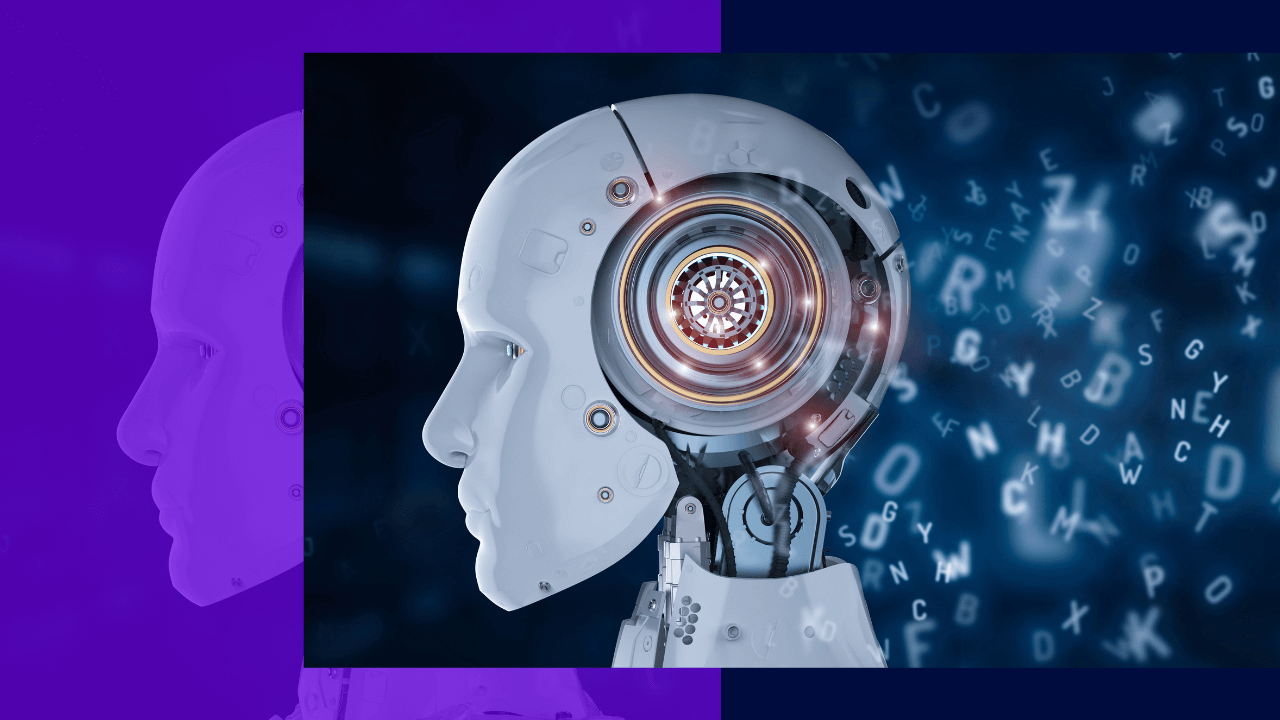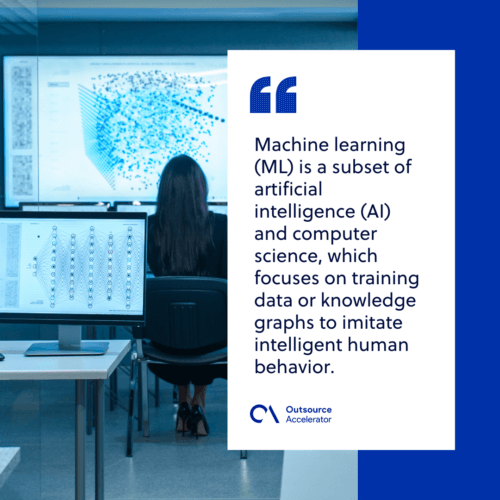Everything you need to know about machine learning

It is worth noting that machine learning is paving the way for the evolving future. It is now an important element for transforming technology in all industry verticals, including healthcare, finance, retail, social media, and other sectors.
Machine learning[1] enables people to accomplish more activities using smart software. It significantly impacts people’s lives and influences their decision-making.
This article will discuss the fundamentals of machine learning, its types, and applications, including how businesses utilize it.
How does machine learning work?
Machine learning (ML) is a subset of artificial intelligence (AI)[2] and computer science, which focuses on training data or knowledge graphs to imitate intelligent human behavior.
The technological advancement in storage and processing enables innovative products through machine learning.
ML algorithms use computation methods to learn directly from data without human intervention, and it involves adapting models to enable them to make predictions and classifications.

How are businesses using machine learning
Whether a startup, medium, or large enterprise, the use of machine learning has become an indispensable element as it gives a lot of advantages to businesses.
Aside from the cognitive services that it may offer, companies use machine learning to make informed decisions based on predictions.
For instance, in the retail sector, it allows predicting user behavior or market trends. ML also helps businesses in improving their automation and security.
Most often, businesses leverage machine learning since it helps develop software that has the ability to understand human language.
This is a crucial aspect that OP360 excels in. Its AI services are designed to comprehend and respond effectively to natural language inputs.
For many industry verticals, machine learning combined with artificial intelligence have become their core technology to break through complex business problems.

Types of machine learning
ML are categorized by how algorithms learn and process datasets. The algorithm depends on what type of data organizations want to predict.
Here are the types of machine learning:
Supervised learning
Supervised learning is a widely adopted form of machine learning. Its algorithms build a model to predict future events.
This works by analyzing a large number of labeled training datasets, specifically, to train algorithms or predict output values accurately.
This type of machine learning uses a variety of methods, including linear regression, logistic regression, neural network, random forest, Naïve Bayes, and support vector machine (SVM).
Supervised learning helps organizations solve a lot of problems, such as classifying spam emails and separating them into specific folders.
Unsupervised learning
Unsupervised learning involves algorithms that train unclassified or unlabeled datasets. Its algorithms scan datasets to discover groupings, intrinsic structures, or hidden patterns without human intervention.
Clustering or cluster analysis is the most common unsupervised learning technique. It refers to grouping data into clusters according to its parameters, such as similarities or differences. For instance, group customers based on the product they purchase.
Semi-supervised learning
Semi-supervised learning is the type of machine learning that comprises characteristics of both supervised and unsupervised learning. It involves training algorithms using the combination of labeled and unlabeled datasets.
It uses smaller labeled data to guide classification, and the model is free to explore and have its own understanding of datasets.
Reinforcement learning
This type of machine learning involves algorithms that learn through interaction with their own environment as it goes by the trial and error method.
Reinforcement learning allows software or machine to determine ideal behavior within a specific situation and develop the best action or policy for a given problem.
Machine learning applications
Machine learning is used in a wide range of applications, and it is relevant to many industries and fields. Organizations use machine learning in several ways.
Here are some of the machine learning applications:
Image processing and pattern recognition
Image processing and pattern recognition is the most common real-world example of machine learning.
It deals with identifying patterns and objects within images, videos, and other visual inputs through the intensity of pixels in B&W or colored images.
Powered by Convolutional Neural Networks (CNN), it applies in – radiology in healthcare, photo tagging on social media, recognizing handwriting, and self-driving cars in the automotive industry.
Medical diagnosis
Machine learning is increasingly applied in the healthcare sector. Medical institutions leverage machine learning to address a variety of issues in the medical field.
With the massive amount of healthcare data sets, machine learning significantly helps to discover patient diagnoses, drugs, treatments, and improve patient outcomes. It also helps in automation processes to prevent human error.
Financial market analysis
Machine learning and AI algorithms are also widely adopted in the finance sector. Banks, fintech companies, and traders rely on deep learning algorithms to automate stock trading.
Moreover, machine learning helps in providing insights to identify trends and determine investment opportunities relevant to executing trading.
Speech recognition
Powered by natural language processing (NLP), machine learning can also be applied in speech recognition, which can translate human speech into written format.
Today, mobile devices incorporate speech recognition to conduct directory assistance services such as voice search.
Search engines
With machine learning, web search benefits by enhancing search results, analyzing user behavior, and helping to discover data trends.
Searching recommendations and spelling corrections are also fueled by machine learning on aggregated user queries.
Fraud detection
The financial and banking sector benefits from the use of machine learning. Supervised learning can train models to spot and uncover fraudulent transactions in real-time.
Powered by machine learning, the fraud detection system improves detection accuracy by 90%, and minimizes fraud investigation time by 70%.
Why does machine learning matters?
Today, machine learning is used in many ways. Organizations in technology, biomedical, finance, and almost every other industry vertical are leveraging the significant use of machine learning.
Its applications are evidently endless. Machine learning’s generated outputs enabled companies to make informed decisions and solve complex business problems while improving effectiveness and scalability.
Article References:
[1] Machine learning. El Naqa, I. and Murphy, M.J. (2015). What Is Machine Learning? Machine Learning in Radiation Oncology, [online] pp.3–11.
[2] Artificial Intelligence (AI). Howard, J. (2019). Artificial intelligence: Implications for the future of work. American Journal of Industrial Medicine, [online] 62(11), pp.917–926.







 Independent
Independent




